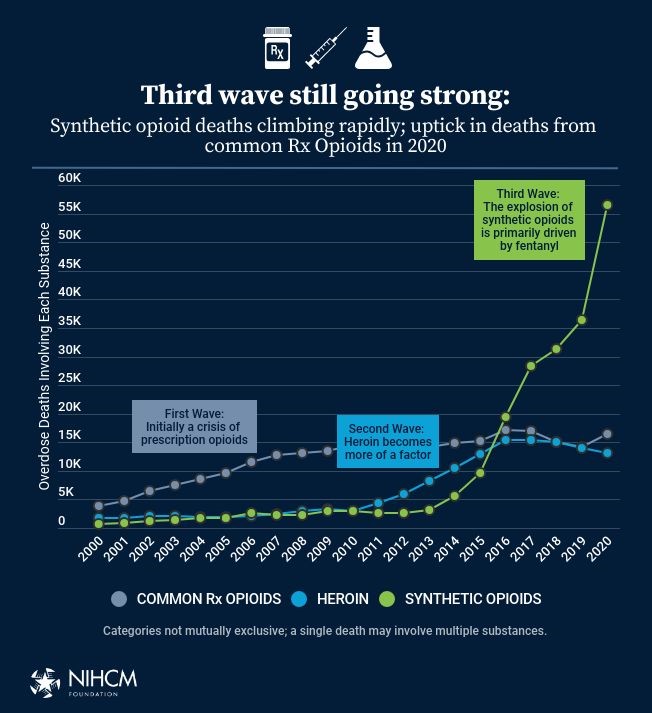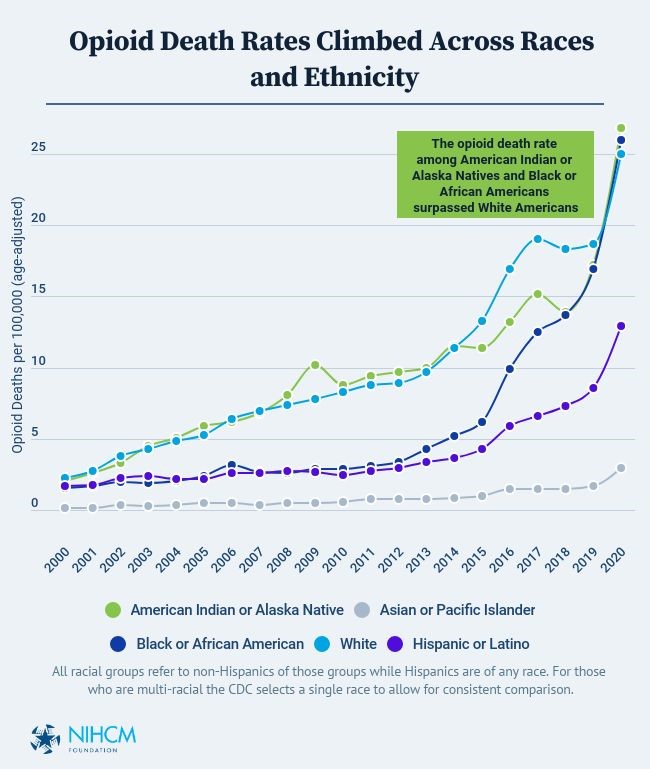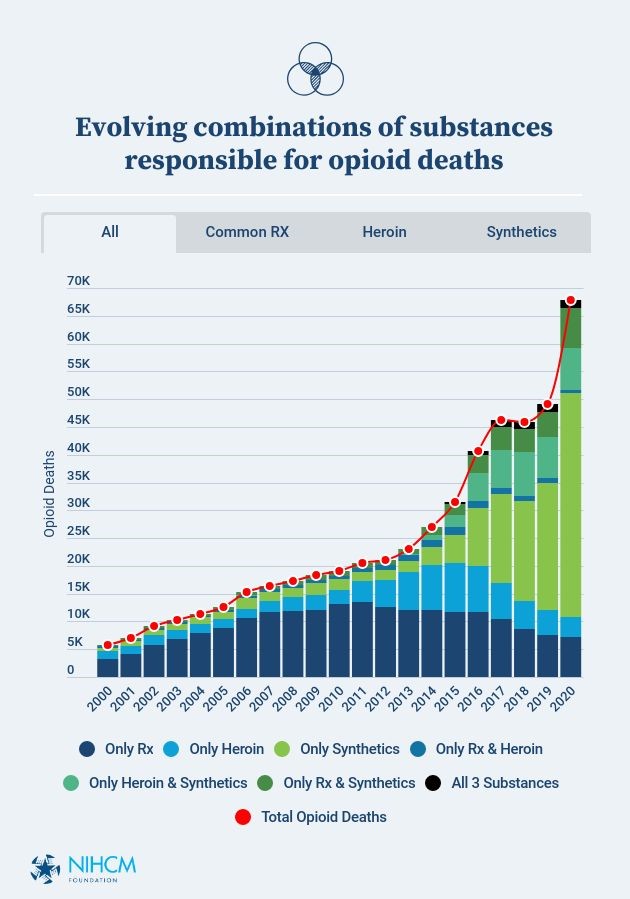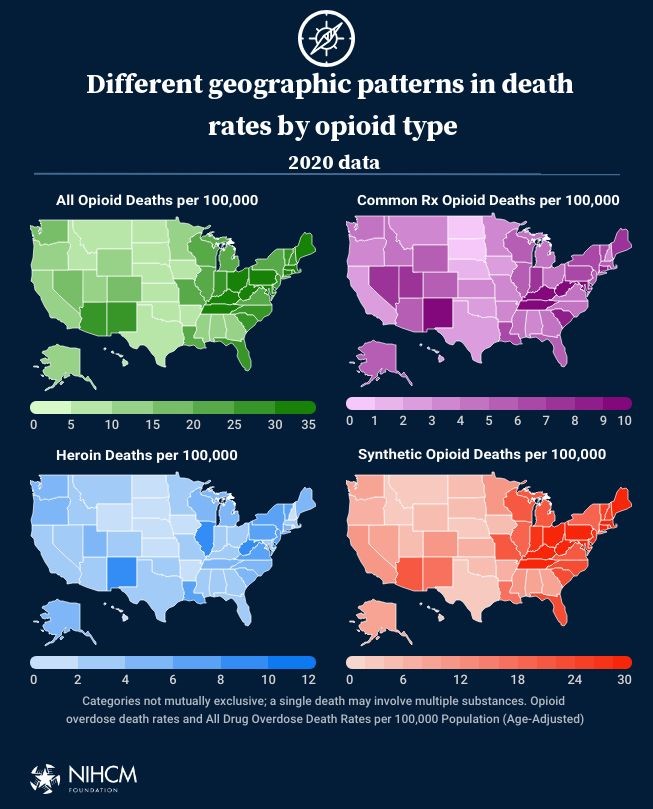It's a New Day in Public Health.
The Florida Department of Health works to protect, promote, and improve the health of all people in Florida through integrated state, county, and community efforts.
Visualizing the Impact of the Opioid Overdose Crisis
Florida Department of Health in Marion County
- 352-629-0137
- Info.Marion@FLHealth.gov
-
Mailing Address
1801 SE 32nd Avenue
Ocala, FL 34471-5532
The opioid epidemic has greatly impacted the number of overdoses seen across the country and in Marion County. To get an idea of the magnitude of the changes seen in communities across the country, please view the below graphics.

"Over this period, the crisis evolved in three well-documented waves. Initially, overdose deaths were predominantly linked to common prescription opioids. Despite a recent decline in deaths involving prescription opioids, there was an uptick in 2020. Heroin was increasingly involved in overdose deaths since 2011 but began declining in 2016. Beginning in 2014, there was an explosion in the number of deaths involving synthetic opioids such as fentanyl. The source of fentanyl driving the increase in synthetic opioid-involved deaths is more likely to be illicitly manufactured than pharmaceutical. Because a single death may involve multiple types of opioids, summing across the three categories in any year will overstate the total number of deaths in that year." - National Institute for Health Care Management

"Over this period, opioid overdose death rates have increased in all racial and ethnic groups, but disparities exist between some groups. The opioid crisis initially affected White Americans more because they are much more likely to be prescribed opioid painkillers. However, the demographics have been shifting for years and the opioid death rate among Black or African Americans and American Indians or Alaskan (AI/AN) surpassed other racial groups in recent years.
The main driver of opioid overdose deaths in Black communities is fentanyl. There are also disparities in access to effective evidence-based treatments and naloxone. The increase in opioid overdose deaths among AI/AN is due to opioids alone and in combination with alcohol, benzodiazepines, cocaine and methamphetamine. Many underlying social factors driving this pattern include socioeconomic inequity, historical trauma, and inequities in healthcare access and treatment programs.
Race and ethnicity were used as defined in the WONDER and NCHS databases. Racial and ethnic groups were defined first by ethnicity (Hispanic or Latino) and subsequently by race (non-Hispanic American Indian or Alaska Native, non-Hispanic Black or African American, non-Hispanic White, and non-Hispanic Asian or Pacific Islander)." - National Institute for Health Care Management

"In the panel above, we present unduplicated counts of the number of deaths involving specific combinations of prescription opioids, heroin and synthetic opioids. There is a growing share of opioid deaths involving two or even all three of these substances, particularly in recent years. It is also apparent the large uptick in opioid overdose deaths can be attributed to use of only synthetic opioids." - National Institute for Health Care Management

"The burden of opioid deaths is spread unevenly across the U.S. Synthetic opioid death rates are higher in the eastern portion of the U.S., which has been attributed to the fact that powdered heroin is typically used in this area of the country, and is more easily mixed with synthetic opioids, making for a potent and deadly combination. In contrast, the heroin used in the western portion of the country is a tar-like substance that does not mix easily with synthetic opioids, providing a small measure of protection against unintended heroin overdoses. From 2019 to 2020, synthetic opioid death rates increased by over 56% in the U.S. In contrast, heroin death rates decreased by nearly 7% from 2019 to 2020 with increases in only several states. For prescription opioids, while there are some state hot spots with elevated death rates, strong geographic patterns are harder to detect." - National Institute for Health Care Management




Connect with DOH